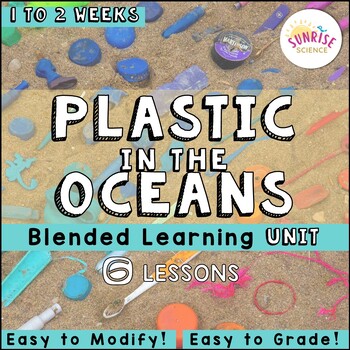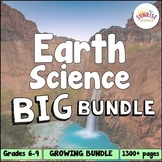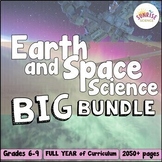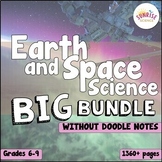Plastic in the Ocean Unit Garbage Patches Gyres Nurdles Microplastics Currents
- PDF
- Google Apps™
- Internet Activities

What educators are saying
Also included in
- Looking for fun, student-centered, and engaging activities to add into your Earth Science curriculum? This is all of my resources for teaching Earth Science! This is a bundle of engaging resources including editable NGSS-aligned blended learning units, Cornell Doodle Notes, digital Pixel Art contentPrice $223.00Original Price $316.63Save $93.63
- This is a bundle of all of my resources for teaching Earth and Space Science at the middle school level! These resources include a mix of Cornell Doodle Notes, lab activities, inquiry activities, digital lessons and units, projects, and pixel art digital content review activities.✨ Please note thatPrice $327.00Original Price $450.24Save $123.24
- This is a bundle of all of my resources for teaching Earth and Space Science at the middle school level, EXCLUDING the Cornell Doodle Notes. The resources in this bundle include a mix of digital lessons and units, lab activities, inquiry activities, projects, review activities, and assessments.✨ ThiPrice $259.00Original Price $369.00Save $110.00
Description
This blended learning unit on Plastics in the Oceans includes a series of 6 lessons help students to explore the accumulation of plastics in the Earth’s oceans and the impact that this has on Earth’s systems. This unit incorporates a great mix of inquiry, questioning, math skills, higher-level thinking, and empowerment as students explore the tremendous impact that plastics have on marine systems.
What is a blended learning unit? Blended learning combines online educational materials and opportunities with physical place-based classroom methods. This resource is the digital 'backbone' component of the unit that is editable and flexible for incorporating hands-on activities and labs and for varying the delivery of lessons to accommodate whole-class discussion, or small group, partner, or individual work.
But PLEASE NOTE! This is NOT a "webquest"! These lessons are written to be a sequential journey through the content and the teacher will still be facilitating the lessons. Students are not left to complete these lessons on their own. The teacher can use best practice pedagogy to have students interacting in whole-class discussions and small group work throughout the unit!
These 6 lessons are organized into separate Google Docs that you can share each day (or every other day as some lessons will take 2 class periods) on your Google Classroom. Students will type directly on their copies of these Docs and these are what you will grade for each student.
My students have responded so well to this lesson format. I love that I can schedule out all of the lessons in Google Classroom and I know what I’m teaching weeks out! The prep is easy and the grading is so easy too.
This download includes a Unit Overview Google Doc that is for the Teacher. This document has all of the lessons written out in sections (Lesson 1, Lesson 2, Lesson 3, etc.) so that you can see everything in one place. This document notes how many days (45 minute periods) each individual lesson will usually take to complete and it contains most of the answers for the activities. This will help you with planning. It also contains the answers and example student models.
Please view the PREVIEW for more visuals of how this unit is organized.
The variety of activities that make up this lesson include:
- modeling of phenomena
- an ocean gyres map simulation
- a digital graphing assignment using real beach clean-up data
- video clips with corresponding Google Forms to check for understanding
- a digital single-use plastics sorting activity
- the opportunity to design an ocean plastics clean-up device
- a forum to give and receive feedback from peers
- a summative ‘Public Service Announcement’ assignment
These are the topics covered in each lesson:
Lesson 1: Plastic Pollution
Lesson 2: Ocean Currents
Lesson 3: Nurdles and Gyres
Lesson 4: Effects of Plastic Pollution
Lesson 5: The Extent of the Problem
Lesson 6: Public Service Announcement Project
This unit was designed to meet the following NGSS Standards: MS-ESS2-6: Develop and use a model to describe how unequal heating and rotation of the Earth cause patterns of atmospheric and oceanic circulation that determine regional climates; MS-ESS3-3: Apply scientific principles to design a method for monitoring and minimizing a human impact on the environment.
Try this lesson around Earth Day!
You may also be interested in my Climate Change Blended Learning Unit!
Thanks for looking!
Sunrise Science








